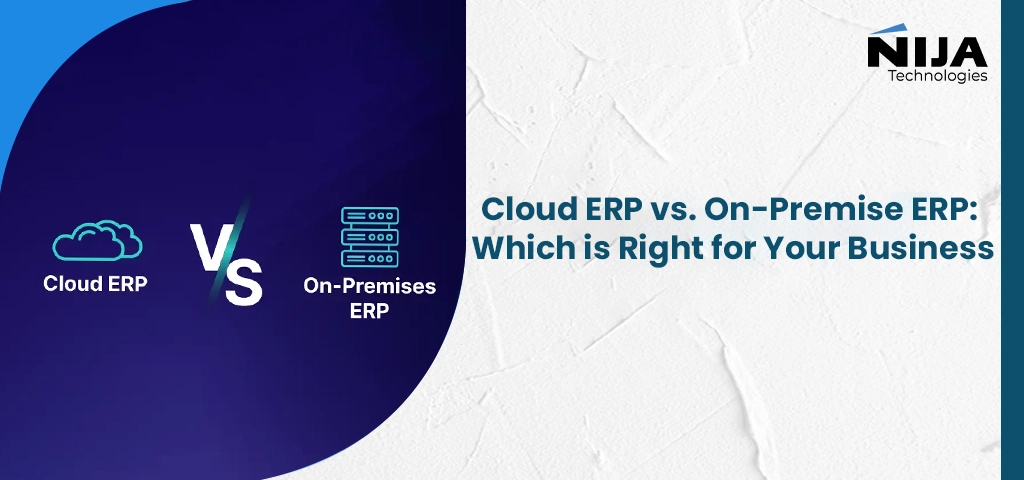Cloud ERP vs. On-Premise ERP: Which is Right for Your Business
In 2023, the global ERP market surpassed $50 billion, with cloud-based solutions capturing over 60% of new implementations according to Gartner research. As business leaders navigate this high-stakes technology decision, the cloud versus on-premise debate has never been more consequential. When companies that successfully implemented the right ERP solution report increased operational efficiency and reduced operational costs, many executives admit they’re uncertain whether cloud or on-premise ERP would better serve their organization’s unique needs. This comprehensive guide cuts through the confusion, offering insights to help you make decisions that could transform your business operations for years. Whether you’re a growing startup or an established enterprise, the ERP deployment model you choose today will define your organization’s agility, security posture, and financial structure in an increasingly competitive marketplace.
What is Cloud ERP?
Cloud ERP represents a modern approach to enterprise software management, where the entire ERP system is hosted on remote servers and accessed via the internet. This innovative solution offers businesses a flexible and dynamic approach to managing their core operational processes. Key features that define cloud ERP include:
- Scalability and Flexibility: Organizations can easily adjust their system resources as their business grows or changes.
- Subscription-Based Pricing: A predictable, ongoing cost model that eliminates massive upfront investments.
- Remote Accessibility: Enables real-time access to critical business data from anywhere with an internet connection.
Advantages of Cloud ERP
Cloud ERP solutions offer numerous benefits that make them attractive to modern businesses:
- Cost-Effectiveness: Lower initial investment and predictable monthly expenses.
- Rapid Deployment: Quick implementation with minimal internal IT infrastructure requirements.
- Seamless Scalability: Easy to expand or contract based on business needs.
- Universal Accessibility: Access critical business data from any device with internet connectivity.
Disadvantages of Cloud ERP
Despite its advantages, cloud ERP is not without limitations:
- Customization Constraints: Less flexibility in modifying core system functionalities.
- Internet Dependency: Requires consistent, reliable internet connectivity.
- Long-Term Cost Considerations: Subscription fees can accumulate significantly over time.
- Reduced Control: Limited influence over system updates and data management processes.
What is On-Premise ERP?
Contrasting with cloud solutions, on-premise ERP refers to software installed directly on an organization’s physical servers and managed internally. This traditional approach offers a different set of characteristics:
- Complete Infrastructure Control: Organizations have direct oversight of their entire system infrastructure.
- Significant Initial Investment: Requires substantial upfront hardware, software, and implementation costs.
- Customization Potential: Provides extensive opportunities to tailor the system to specific business processes
Advantages of On-Premise ERP
Traditional on-premise ERP systems still offer compelling benefits:
- Complete Data Control: Full management of infrastructure and data storage.
- Extensive Customization: Ability to profoundly modify systems to match unique business processes.
- Independence from Internet: Operational without relying on internet connectivity.
- Potential Cost Efficiency: Lower total cost of ownership in extended periods.
Disadvantages of On-Premise ERP
On-premise solutions also present significant challenges:
- High Initial Investment: Substantial upfront costs for hardware and software.
- Complex Maintenance: Requires dedicated resources for ongoing system management.
- Staffing Requirements: Necessitates specialized IT personnel for maintenance and security.
- Limited Scalability: Expanding system capabilities demands additional hardware investments.
Key Differences Between Cloud ERP and On-Premise ERP
| Feature | Cloud ERP | On-Premise ERP |
| Deployment | Hosted on vendor’s servers | Hosted on the company’s servers |
| Cost | Lower upfront, ongoing subscription | High upfront, lower long-term costs |
| Scalability | Easily scalable | Requires additional hardware |
| Customization | Limited | Highly customizable |
| Accessibility | Accessible anywhere with the internet | Limited to physical location |
| Security | Vendor-managed | Company-managed |
Factors to Consider When Choosing the Right ERP
When selecting between cloud and on-premise ERP, businesses should evaluate:
- Organizational Size and Growth Trajectory
- Financial Constraints and Budget Flexibility
- Customization Requirements
- Security and Compliance Needs
- Regional Internet Infrastructure
- Strategic Priorities: Scalability vs. Control
Conclusion
Choosing between cloud and on-premise ERP is not a one-size-fits-all decision. Each approach offers distinct advantages and challenges. The optimal solution depends on your business context, technological infrastructure, financial resources, and strategic objectives.
Businesses must conduct thorough internal assessments, understanding their unique operational requirements, growth plans, and technological capabilities. By carefully weighing the pros and cons outlined in this article, organizations can make an informed decision that propels their operational efficiency and supports long-term growth.

